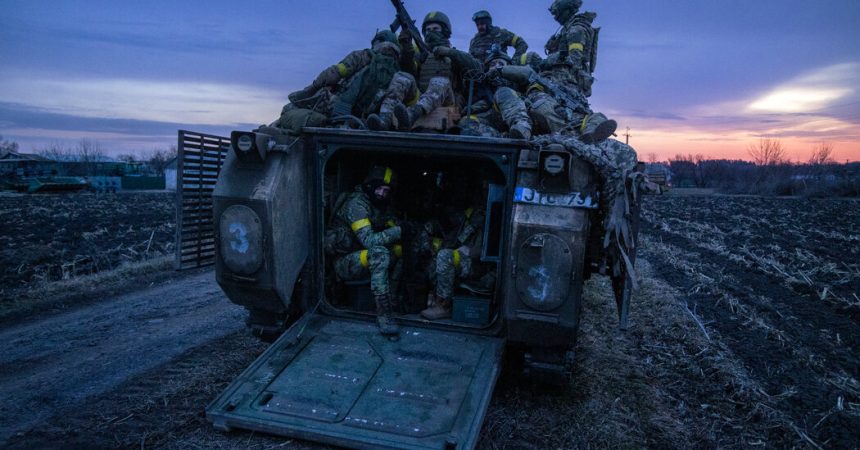David Guttenfelder traveled along Ukraine’s northeastern border twice in the months before Russian troops again poured through.
The invaders had not returned. Not yet. But along about 600 miles of Ukraine’s northeastern border territory that The New York Times visited late last year and again in the early spring, the war has never left.
Much of this area, in the Kharkiv and Sumy regions, was farmland once. Now a farmhouse hosted a counter-saboteur unit — made up of anti-Putin Russians, to avoid sending Ukrainian troops into Russia — preparing before dawn for a cross-border raid.
The fields are far too exposed to Russian fire for anyone to try a harvest. Instead, they are sown with “dragons’ teeth,” concrete antitank barriers typically bound together with cables and threaded with razor wire.
In 2022, Russian troops rolled over this area and almost to the doorstep of major cities like Kharkiv and Sumy. Then, before the end of that year, Ukrainian forces pushed them back across the border.
Russian troops began a new offensive in the Kharkiv region last month. But these villages, within 10 miles of the border, were always in range of artillery fire.
Sirens cannot provide enough warning time for a bombardment from this close, and air defenses cannot repel it. Residents rely on deliveries of humanitarian aid, and the long, cold wait for supplies takes place under near daily shelling.
Bombing and drone attacks were already intensifying before the new ground offensive.
And Ukraine’s military was already transforming the landscape: new mazes of trenches and bunkers, more closed-off zones and vast fields and forests of land mines. At checkpoints, nervous soldiers flew drones to scan the approaching roads.
Soon, said the mayor of one village that lies within range of Russian artillery, there would be nothing to photograph but stray dogs and ruins.
Civilian government has struggled to provide supplies and basic needs or to persuade residents to fully evacuate. Schools teach remotely or inside underground bunkers.
The war is bringing stark change to an area where families often have members in both Russia and Ukraine and where a common faith and culture spread across the border. Even now, a border crossing has remained open for civilians in the Sumy region.
In the village of Richky, about seven miles from the Russian border in the Sumy region, Father Bohdan Oprysko of the Ukrainian Orthodox Church said that after an increase in Russian attacks, very few people could attend services. Now, “It’s only on holidays, like Easter, that the church is full,” he said.
His two sons moved to Poland with their families before the full-scale war started in February 2022. Father Bohdan and his wife have resisted their urging to move abroad as well.
“It’s my hometown,” he said. “How can I go somewhere else?”
In some towns and villages, only a few people remained, largely women and older people with nowhere to go. Vovchansk, which became a battlefield again in May after Russian forces came over the border in the Kharkiv region, had about 2,000 residents by December, down from its prewar population of about 17,000. It had visibly deteriorated by the spring.
The scars of invasion and bombardment had rendered some reclaimed settlements uninhabitable.
Russia’s new push in Kharkiv began at perhaps Ukraine’s most vulnerable moment since the beginning of the full-scale war — its forces stretched, its store of weapons and ammunition depleted after months of delay by its most important supplier, the United States.
Now, more American aid is coming and Ukraine’s Parliament has changed military recruitment rules to try to recruit more troops. But Russia appears to be intensifying the pressure.
As they have argued recently for more leeway to fire American-made weapons into Russian territory, Ukrainian officials have pointed to further gathering of troops, including just across from the Sumy region.
Ukraine’s borderlands may be about to become more dangerous still.
Yurii Shyvala, Dzvinka Pinchuk and Oleksandr Chubko contributed reporting.






